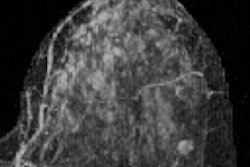The University of Oklahoma and Mercy Hospital Oklahoma City are partnering to develop new short-term breast cancer risk prediction models aimed at increasing breast MRI's ability to detect cancer.
The collaboration is supported by a $2.5 million grant from the National Institutes of Health/National Cancer Institute. The university and hospital will develop a "rule-in" approach to identify women who are excluded from current breast MRI screening guidelines but have a higher risk of developing breast cancers not found on mammography, as well as a "rule-out" approach for women with an elevated lifetime cancer risk but no imminent risk, according to a statement released by the University of Oklahoma.
To develop these models, the research team will analyze image features related to bilateral asymmetry of mammographic tissue density and/or MRI tissue enhancement signals of the left and right breasts of the same woman. The group will study nearly 10,000 digital mammogram and breast MRI images over a five-year period.
The risk models will then be tested in a prospective clinical study at Mercy Hospital's breast center on 4,000 negative screening mammography cases to identify women with mammography-occult breast cancer that can be found on MRI, according to the university.



















